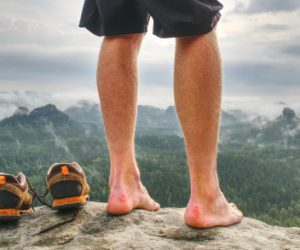
Blisters
Blisters Symptoms, Treatment and Prevention
Blisters are annoying and painful, but they have an important job to do. They protect your skin from further damage while it’s busy healing.
Symptoms
Often caused by friction, blisters can also form in response to burns, exposure to severe cold, viral infections, and contact with irritants or allergens.
For information on blistering rashes see plant rashes, or herpes, shingles, and chickenpox. For information on blistering caused by allergens, see allergic reactions.
Get Medical Help If:
- You notice pus, inflammation, redness or warm skin around the blister
- You see red streaks radiating out from the blister
Is it contagious? Blisters caused by friction or other forms of direct skin damage are not contagious. The fluid inside blisters caused by a viral infection can be contagious.
Treatment
Avoid puncturing a blister to drain it, as this can result in slower healing and possible infection. The best thing to do for blisters is encourage them to dry out and heal. As an astringent, Domeboro® Soothing Soak is designed to gently and safely dry out blisters while also soothing uncomfortable, itchy and irritated skin due to the rashes that blisters sometimes accompany, and/or the skin’s healing process.
Domeboro® Soothing Soak can be used with a compress/wet dressing or as a soak. Mix 1, 2, or 3 packets in 16 ounces of cool or warm water.
- Compress or wet dressing: Immerse a compress or wet dressing in the solution and apply to affected area for 15 to 30 minutes. Repeat as needed or as directed by a doctor.
- Soak: Immerse the affected area directly in the solution for 15-30 minutes. Repeat the soak 3 times a day or as directed by a doctor. Discard the solution after each use.
Other Treatments
Most small blisters caused by friction or minor burns heal naturally over time. When not being treated with a wet astringent compress or soak, keep the blistered area clean and dry to further promote healing.
Try to protect the blister from rubbing against clothing, sheets and other potential irritants until completely healed.
- It’s not uncommon for babies to be born with a blister on their lips, from thumb-sucking in the womb.
- Don’t try this at home: during much of the 1800s, a common cure for virtually every disease involved irritating the skin until blisters formed. Doctors believed “blistering” was the most effective way to deal with infections and mental illness.
- Many foot blisters are caused by perspiration: wet socks and shoes get slippery and irritate the skin. Try using antiperspirant on your feet before a long walk or workout.
Prevention
Protect feet with properly fitting shoes and socks. Athletes should wear padded, moisture-wicking socks intended to protect feet during extended exercise. If you are prone to developing blisters on your feet, investigate products that pad/protect the specific areas of your feet that tend to blister. Wear gloves to protect hands during activities that require the use of tools or other handheld gear, such as gardening or sports, or when working with chemicals and other caustic substances. Protect skin from sunburn with sunscreen, limited exposure, a hat and appropriate clothing.
Domeboro® offers treatment for blisters with our astringent in powder form.
Cleveland Clinic recommends Domeboro® for blistering diseases.
